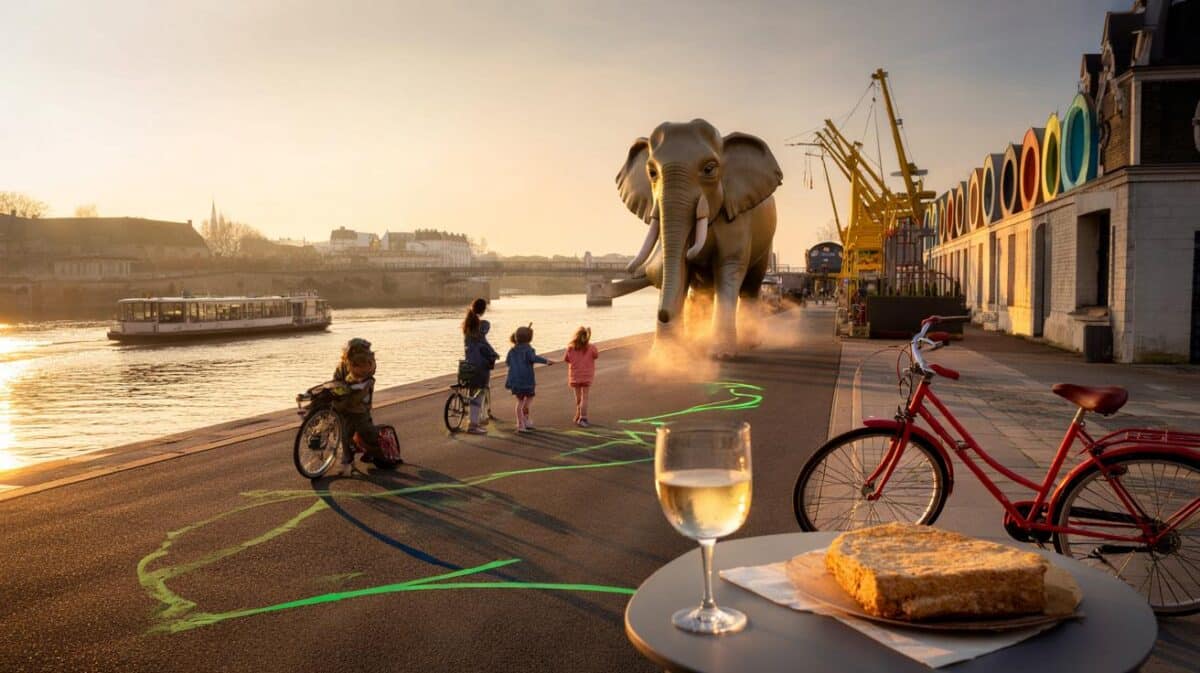As travel costs climb and knees grow less forgiving, the allure of a town that’s both delightfully walkable and quietly “magical” starts to make simple sense. When **Simon Calder** talks about places that work without a car and feel good underfoot, one coastal name keeps surfacing among retirees and weekenders alike.
A couple in matching windbreakers pace the promenade, pausing to read the shipping forecast on a phone that keeps misting in the breeze. A gull sails past with theatrical timing, almost as if it’s part of the council’s tourism budget.
On Mostyn Street, a café window fogs as a kettle sings. A mobility scooter hums by, unbothered by potholes or panic. At the station, someone wheels a small suitcase straight onto the pavement and doesn’t even glance around for a taxi rank.
I walk slower than usual, testing the rhythm of a town that seems designed for legs, not engines. *The quiet human scale of it all sneaks up on you.* Then I hear myself think a daft thought. Maybe magic can be measured.
Where “magical” meets manageable: why this seaside town works
Call it postcard Britain with practical shoes. **Llandudno** has the easy geometry older travellers crave: flat promenade, wide pavements, benches where you need them, and everyday errands stitched into a compact grid. You can step off a train, cross a road, and be on the seafront before your tea has cooled.
This isn’t romance over reason. It’s a place where you don’t have to choose between a view and a chemist. That’s rare.
I watched Mavis, 74, fold her shopping list in half at a bus stop outside the pier. “Got it all,” she grinned, tapping her tote: bread, a paperback, plasters for a stubborn heel. She’d rolled out late, walked the promenade to wake her hips, and was home in time for Bargain Hunt. Another morning, I timed the amble from station to sand: eight minutes at a retiree’s pace, including a wave at a neighbour and a stopped watch.
What struck me most wasn’t speed. It was the calm choreography of it all. No dodging scooters at 30mph. No guessing games at crossings. The town felt like it had read the room—and set the tempo.
Walkability here isn’t just convenience. It’s independence by design. Every extra bench becomes a promise: you can join in, go farther, linger longer. That’s resilience dressed as urban planning. The so‑called magic arrives in the margins—the curve of the bay, the handsome pier ribs, the glint on the tram rails up the headland—layered over a layout that doesn’t punish tired knees. You feel looked after without being managed.
How to do it at your pace: small moves, big comfort
Pick your base like a local. A guesthouse near Mostyn Street keeps you within a gentle stroll of the station, cafés, and the pier, while the eastern side towards Craig‑y‑Don gives you quieter evenings and parks for shady sit‑downs. Start days with the promenade in soft light, then loop back through town for errands. If you want height with mercy, ride the **Great Orme Tramway** up and stroll down in sections, bench to bench. It’s a kind route disguised as a grand view.
Plan breaks as if they’re destinations. That five‑minute pause by a shelter can make a three‑mile morning feel like a doddle. Wet day? Swap the pier for indoor galleries and a slow browse of charity shops with surprisingly good hardbacks. Let the buses be your safety net to Conwy or Deganwy when the wind stiffens. Let’s be honest: nobody tallies steps on holiday—comfort beats stats every time.
Avoid the classic “seaside sprint.” The hills arrive sooner than you think, and the sea breeze will add drag to even the flattest path. Good soles, layers, and a loose plan keep spirits high. One local told me the secret was to treat the promenade like a public living room, not a racetrack.
“There’s always a place to sit, always a place for a cuppa,” said Derek, 78, nodding at the benches like old friends. “That’s what keeps us out and about.”
- Stay within a 10–15 minute walk of the station for easy arrivals and exits.
- Use the promenade as your spine; branch off for shops, loos, and cafés.
- Take the tram or bus up the Orme; save your knees for the views.
- Carry a lightweight rain layer; sea weather changes on a whim.
- Mark accessible loos on your mental map early in the day.
The deeper glow that keeps people coming back
We’ve all had that moment when a place slows your breathing without asking. Here it’s the Victorian curve of buildings holding the bay like a quiet hug. It’s the pier lights coming on as if someone whispered “ready?” It’s neighbours chatting in the pharmacy queue about nothing and everything.
Somewhere between the tram’s gentle clatter and the drift of salt in the air, the practical becomes poetic. You notice the small courtesies: drivers who actually stop, shopkeepers who look up, doorways that aren’t booby‑trapped with steps. The town’s magic isn’t a trick. It’s repeated, decent acts baked into streets that forgive the years.
As travel advice goes, the formula is simple: rail in, walk easy, rest often, eat well, cherish the view. It’s a pace that lets stories gather of their own accord. The kind you tell later, not because they’re dramatic, but because they felt right.
| Point clé | Détail | Intérêt pour le lecteur |
|---|---|---|
| Walkability without stress | Flat promenade, wide pavements, frequent benches | Reduces fatigue and boosts confidence on foot |
| Seaside “magic” with substance | Pier, Victorian facades, headland views | Beauty that enhances, not hinders, easy days out |
| Car‑free practicality | Rail access, local buses, compact shopping streets | Saves money, simplifies planning, keeps days flexible |
FAQ :
- Is Llandudno doable without a car?Yes. Trains connect to the town, buses link nearby highlights, and most daily needs sit within a short walk.
- What’s the best area to stay for easy walking?Close to Mostyn Street or the seafront keeps distances short and routes simple.
- Is the Great Orme climb too steep?The full climb can be brisk; take the tram up and walk down in stages with bench breaks.
- When’s the sweetest time to visit?Late spring and early autumn bring calmer crowds, steady light, and mild temperatures.
- Any budget tips for pensioners?Travel off‑peak by rail, aim for midweek stays, and look for café lunch deals rather than dinner.
A seaside town that keeps its promises
There’s a quiet dignity to a place that works at walking speed. The station door opens, the sea is right there, and the day unfolds like a well‑worn map. No drama, no dazzle. Just small pleasures strung along streets that don’t rush you.
Ask ten visitors what feels “magical” and you’ll get ten gentle answers: the pier bandstand at dusk, the smell of chips in cold air, a tram bell far above the roofs. It all counts. These are the stitches that hold a day together when joints mutter and patience thins.
Maybe that’s why this town crops up whenever we talk about ageing well while still getting out. The recipe doesn’t need fanfare. Good pavements, kind gradients, human‑scale errands, and a view that softens the edges. Tell a friend who’s been hesitating. Or send them a picture of the bay and let the curve do the work.








